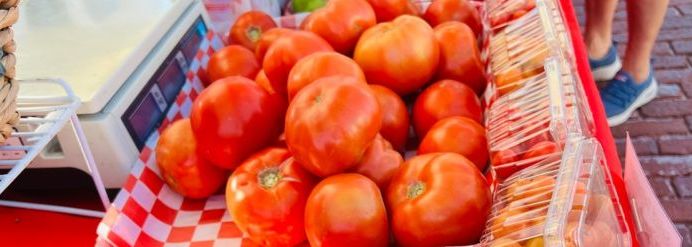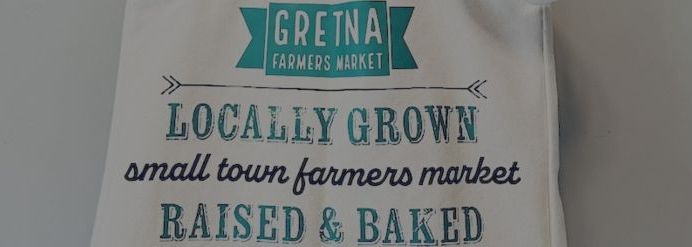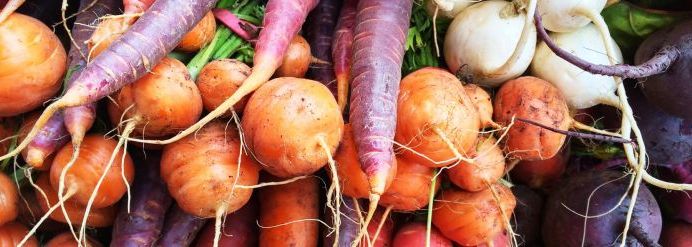Local produce from the Gretna Farmers Market tastes better and is more nutritious than grocery store options thanks to peak ripeness, nutrient retention, soil health, and a focus on flavor over shelf life.
Have you ever taken a bite of a tomato from the farmers market and wondered why it tastes so much better than the one from the grocery store? Or noticed how the color of a market carrot seems deeper, the lettuce crisper, the berries sweeter? You’re not imagining it, and there’s real science behind why local produce often beats supermarket options in both flavor and nutrition.
1. It’s Picked at Peak Ripeness
One of the biggest differences comes down to timing. Grocery store produce is often harvested early, before it’s fully ripe, so it can survive long-distance shipping and storage. Many fruits and vegetables continue to ripen after picking, but they don’t develop the same depth of flavor or nutrition once they’re off the plant.
At the Gretna Farmers Market, vendors usually pick their produce within 24–48 hours of selling it. That means what you’re buying was likely on the vine, stem, or in the soil just a day or two ago, and harvested at its tastiest and most nutritious point.
2. Less Time Off the Vine = More Nutrients
Vitamins in fruits and vegetables begin to break down after harvest, especially water-soluble ones like vitamin C, B vitamins, and antioxidants. Produce that spends days or weeks in transit and on store shelves can lose a significant portion of its original nutrient value.
Since local produce spends less time between harvest and your plate, it retains more of those health-boosting compounds. That’s one reason your salad from the farmers market might taste brighter and actually be better for you.
3. It’s Grown for Flavor, Not for Shelf Life
Large-scale farms that supply grocery chains often select varieties bred to ship well and last long, not necessarily to taste good. These varieties are chosen for uniform shape, color, and durability, not for sweetness, texture, or aroma.
Local farmers have more flexibility. They can grow heirloom or specialty varieties that are bursting with flavor, even if they don’t look picture-perfect or survive a 1,000-mile trip. That odd-shaped tomato might just be the juiciest one you’ve ever had.
4. Healthier Soil = Healthier Food
Many small-scale farmers use sustainable and regenerative practices, like rotating crops, composting, and avoiding synthetic chemicals. This builds up healthy, nutrient-rich soil that supports stronger, more flavorful plants.
There’s a direct connection between soil health and the nutritional value of produce. Plants grown in rich soil often have higher levels of minerals and antioxidants, which not only boost your health but also contribute to better taste.
5. You’re Closer to the Source
When you shop at the farmers market, you get to talk to the person who grew your food. You can ask when it was picked, how it was grown, and even get tips for storing or preparing it.
So next time you bite into a peach that’s dripping with juice or a tomato that tastes like summer sunshine, remember the goodness of local produce. And it’s one more reason to love Gretna Farmers Market.














